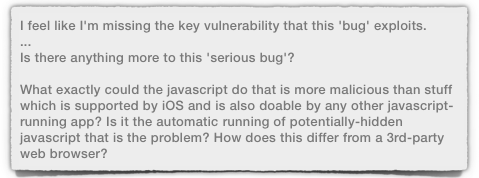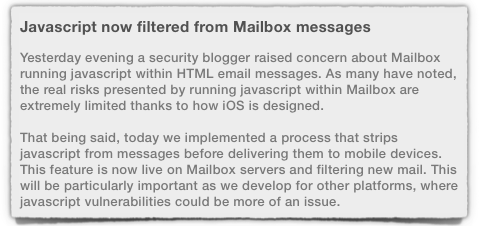Establishing The New Normal After A Breach
As embarrassing and costly as a big data breach may be for an organization, many security professionals will tell you that this kind of incident may be good news in the long run for the risk posture of the business. Sometimes even after numerous warnings from security and risk advisors, the only way for senior managers to sit up and pay attention to a set of risks is to have an incident from that risk detailed blow by blow in the business press.
“Once an organization has gone through all that pain, they’re forever changed,” says Lucas Zaichkowsky, an enterprise defense architect at AccessData. “Your whole outlook changes.”
For all of the problems that breaches bring, they also present a learning opportunity and potential for developing better processes that improve the day-to-day effectiveness of IT security. But that growth can only occur if organizations spend the time to do a thorough analysis of the event to find the fundamental risk factors that contributed to a compromise.
“If you haven’t taken the time to figure out what’s wrong in your program or your technology, then it’s pretty natural that it’s going to happen again,” says Vinnie Liu, managing partner for security consulting firm Bishop Fox.
[Are you getting the most out of security analytics? See Connecting The Dots With Quality Analytics Data.]
Unfortunately, some organizations today tend to engage in a type of whack-a-mole brand of incident response, responding to breaches and malware outbreaks only by cleaning up systems affected by the incidents but never delving into root causes, says James Phillippe, leader of threat and vulnerability services for the U.S. at Ernst Young. Meanwhile, he says, “the root cause–weak network controls, poor user education, weak policies, or perhaps improper architecture configurations–will persist.”
On the other end of the spectrum, many organizations recognize that they can’t simply clean up systems after a breach and carry on as before but because they react quickly without analyzing why things went wrong they end up wasting a lot of money. And then they still end up breached again.
“I think a lot of recidivism stems from the knee-jerk reactions,” Liu says. “You see something wrong, you buy a bunch of tools, you drop them in place, and you think you’re safe.”
This is why leveraging an breach for more executive buy-in, budget and meaningful change requires you use that event “in a balanced manner, not in a panic attack,” says Robert Stroud, international vice president of ISACA.
Once a thorough post-mortem is done, he recommends either using an existing risk model or developing a new one and running the operational and financial impacts of the breach outcome through that model to understand how that changes risk calculations. From there, an organization can more clearly understand if they only need to change a few controls, or if they need to make a major overhaul in security processes.
“More often than not, we see organizations go, ‘Hey, we’ve got to do something about that, let’s just do it,’ and they start executing immediately,” Stroud says. “Organizations will go without any assessment, spend significant money on potential vulnerability without any understanding of the business impact or risk exposure, potentially costing their business significant money. It might be more money than the risk itself.”
As the experts have explained, establishing the new normal following a breach is going to take post-mortem analysis and it’s also going to require changing risk models. But more significantly, it is going to involved sustained investment. The cost of upping the security game is easy to overlook amid all of the more picayune line-items of breach response, but process improvement should be part of the overall response budget once a breach has come to light.
“People talk about overlooking the cost of credit monitoring, reporting, fees and things like that,” Liu says. “But from what we’ve seen, I think some of the biggest investments that have to be made over the long term following a breach is for changing process.”
Have a comment on this story? Please click “Add Your Comment” below. If you’d like to contact Dark Reading’s editors directly, send us a message.
Article source: http://www.darkreading.com/attacks-breaches/establishing-the-new-normal-after-a-brea/240161897
 A “small but very potent”
A “small but very potent”  Namely, the breached firms have control of massive amounts of data about consumers’ and businesses’ habits and practices – a collection of data known in the industry as knowledge-based authentication (KBA) that’s used to determine how likely it is that a given credit application is valid or fraudulent, mostly based on how accurately an applicant answers a set of questions about their financial and consumer history, Krebs writes.
Namely, the breached firms have control of massive amounts of data about consumers’ and businesses’ habits and practices – a collection of data known in the industry as knowledge-based authentication (KBA) that’s used to determine how likely it is that a given credit application is valid or fraudulent, mostly based on how accurately an applicant answers a set of questions about their financial and consumer history, Krebs writes. Nor are there biometric identifiers ready to be rolled out for use by the entire US population at this point, and perhaps there never will be.
Nor are there biometric identifiers ready to be rolled out for use by the entire US population at this point, and perhaps there never will be. 



 Apple has shown an open pair of ears and a lively pair of heels in dealing with
Apple has shown an open pair of ears and a lively pair of heels in dealing with